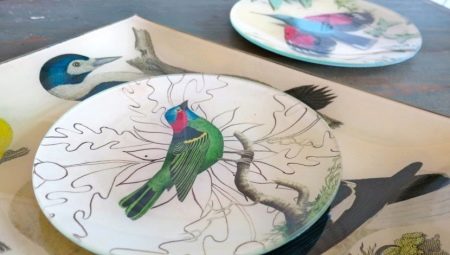Decorative decoupage technique in recent years has become widespread. It consists in the ability to transfer the cut pattern or pattern to any surface. Then the image is varnished to extend the life and safety of the product. A special niche in this technique is occupied by utensils, especially decorative plates. Decoupage allows you to turn a standard plate into an exclusive interior decoration item. At the same time, financial costs are minimal, skills are not required, you can master this decoration method from scratch.
Tools and materials can be found or purchased at any store.
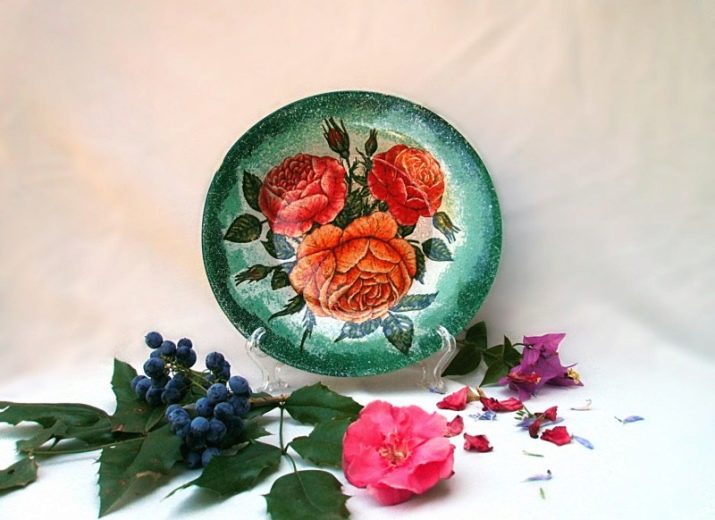
Style selection
Decorative plates using decoupage technique can fit into almost any interior, you just need to choose the right style. We offer you the main directions of styles in which plates decorated using decoupage technique are more than appropriate. Before you select materials and think through the composition, You should decide on the style in which you will design your creation.
Provence
One of the most common and favorite style trends in which decorative plates are most appropriate is Provence. Characteristic features of this style: simplicity of form, restraint of color, an abundance of decorative details, unobtrusiveness, many vintage gizmos. This meets the motives of the area, whose style owes its name: floristic theme, flowers, provincialism.
The bleached tree and the abundance of pastel colors give a special chic to this style: olive, milk, beige, lavender, mint.
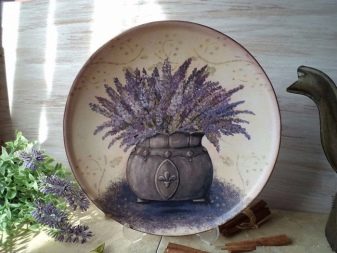
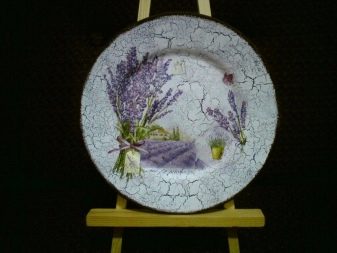
Shabby chic
The style of shabby chic is also replete with decorative elements in the design.In addition to the bleached tree, which is taken as the basis, pale pink gamut reigns supreme here, and contrasting, bright colors are almost completely absent. Floral motifs most often display roses and other romantic details.
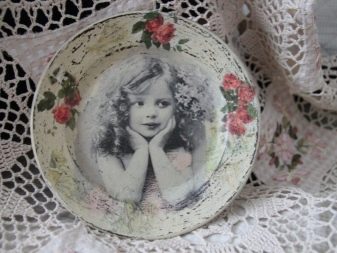
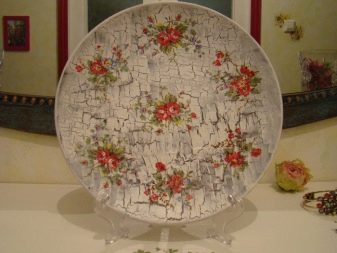
Victorian style
This is an English direction, which owes its name to Queen Victoria. It is very different from the previous two in that he is not characterized by the simplicity of lines and laconicism. Dominate here luxurious notes, chic, wealth. The main background is usually dark, images are applied to it, which are additionally decorated with gilded paints. Shades of gold, copper, saturated greens, wine gamut prevail.
As for the motives, still lifes, chubby angels, and beautiful girls are relevant here.
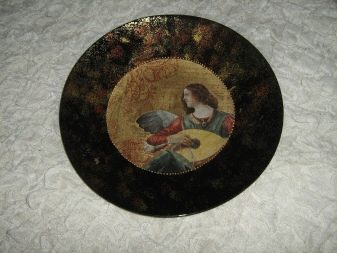
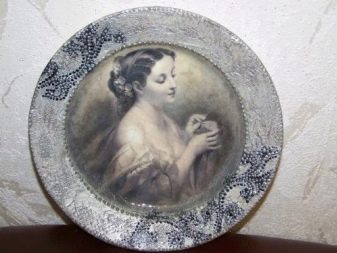
Simplicity
This is the most concise and uncomplicated style, characterized by simplicity. It will fit into the interior of modern styles of loft, industry and others. The motives here are newspaper and magazine clippings. Torn edge, aging is relevant. Despite the laconicism, this style is mostly vintage, but, in essence, universal.
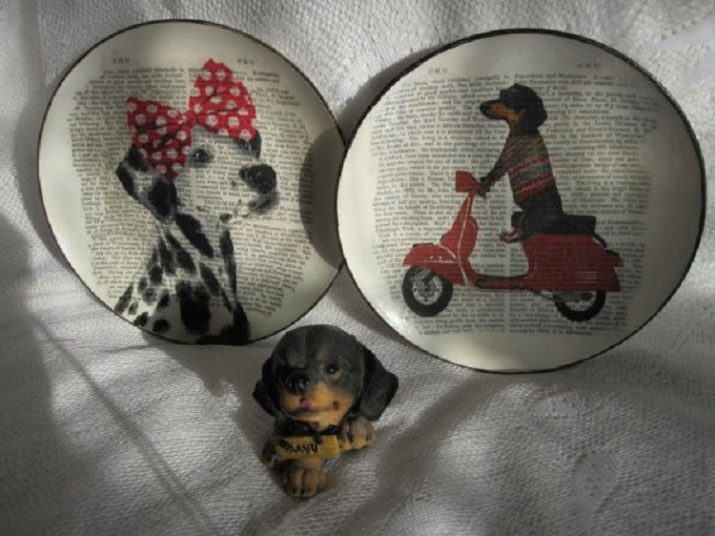
Necessary materials
First you need to prepare a plate that is designed for decoration. This point needs to be thought out, since not every plate is suitable for this purpose. Plates differ in surface structure and the material from which they are made:
- glass;
- wood;
- ceramics;
- china.
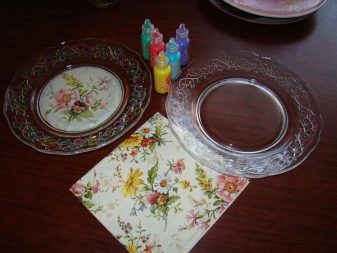
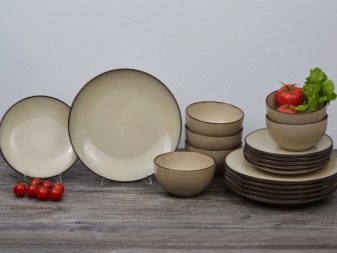
Of course Do not consider disposable or plastic plates as a basis for decoupage. If you are just starting to master decoupage, try decorating a snow-white, plain, smooth plate or saucer. Discard corrugated surfaces, cover with convex details. You can safely take transparent plates as a basis.
If you choose among color options, remember that the color should fit into the style composition.
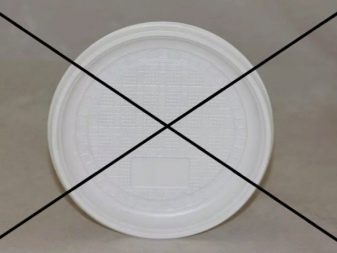
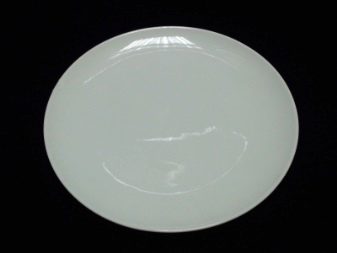
In addition to plates, you need to cook:
- cotton pads or cotton;
- alcohol, nail polish remover, acetone for degreasing;
- white acrylic primer;
- sandpaper;
- glue brush;
- brushes for painting;
- PVA glue or other acrylic;
- scissors that are convenient to work with;
- paper napkins;
- one-step craquelure for aging;
- varnish for the final coating;
- necessary additional decor;
- foam sponge;
- acrylic paints.
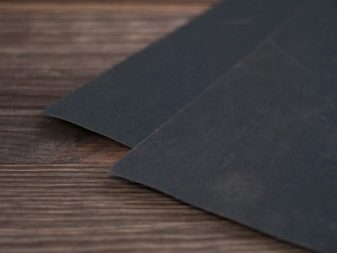


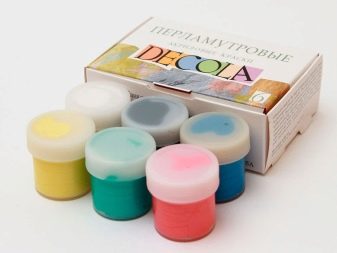
Turn-based workshops
Almost anyone can learn to decorate plates with their own hands. To make a spectacular beautiful interior thing yourself is quite simple, the main thing is to decide on the composition and choose the right materials.
Most often, decoupage is done using napkins., they can be either ordinary or specially designed for this purpose. The difference is that conventional wipes are not layered.
In special, the two lower layers are pre-removed.

Decoupage is distinguished by the method of application:
- straight - when the drawing is applied to the front of the product;
- back, with overlay image on the back.
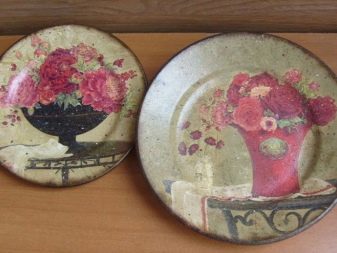
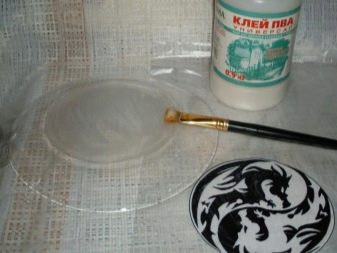
Regardless of the chosen style and composition, the general algorithm for the decoupage of direct-type plates is as follows:
- an image is formed using scissors;
- the surface of the base is degreased, for which it is wiped with cotton wool soaked in alcohol;
- it is necessary to apply white soil;
- after drying, it is processed with sandpaper;
- the drawing is placed on the surface in the selected place and is processed with glue from the center to the edges;
- avoid wrinkles, smooth the surface very carefully;
- the edges of the plate can be treated with acrylic paints applied to a sponge or fingers;
- after drying, varnish is applied to protect the product from external influences in 2 layers, the second after the first has completely dried.
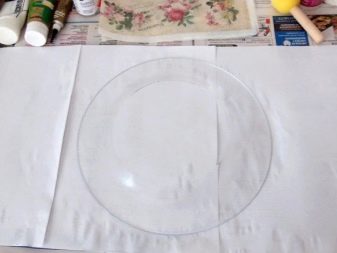
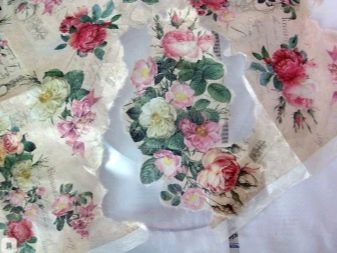
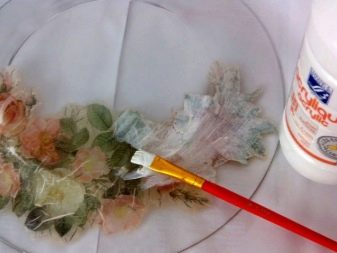
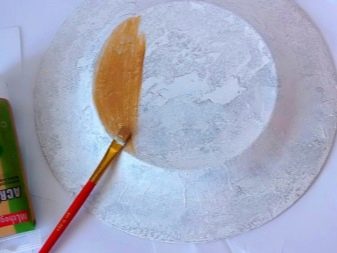
remember, that Before you start sticking the details of the composition, they need to be arranged in a draft version that can be adjusted. Ideally, a diagram is drawn with the determination of the location of one or another part of the ensemble. Only then proceed with the decoration process.
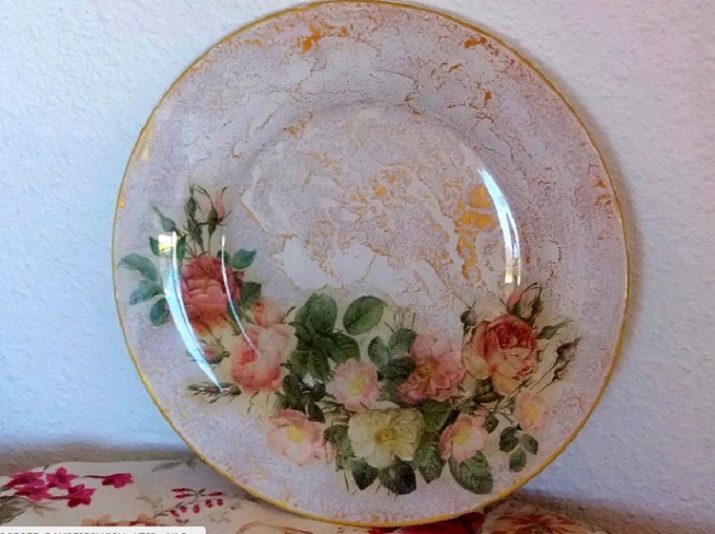
If you decorate dishes in order to just admire it, you can use direct decoupage, and if you plan to use it, make a choice in favor of the opposite. Glassware of a transparent type is suitable for him. Execution algorithm:
- the plate is washed and degreased;
- glue is applied to the bottom;
- the drawing is applied facing the bottom so that it can be seen through the transparent glass;
- image is smoothed out;
- roughness is destroyed with the help of sandpaper very carefully;
- after drying it is varnished;
- at the edges you can use craquelure;
- after drying, acrylic paints of the necessary shade are applied.
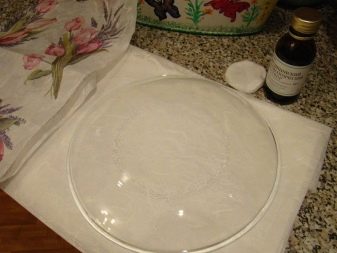
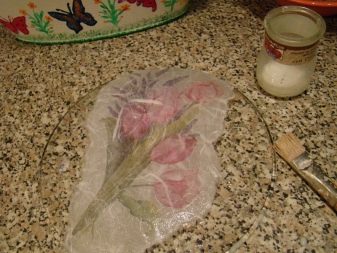
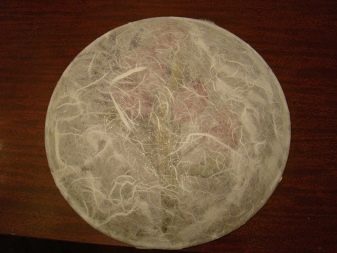

Giving effect to your product will help painting the background with contrasting paint or drawing images of fruits, flowers. A plate with a photograph looks nontrivial. To do this, you need to print the necessary photo on not very thick paper and apply in accordance with conventional technology.
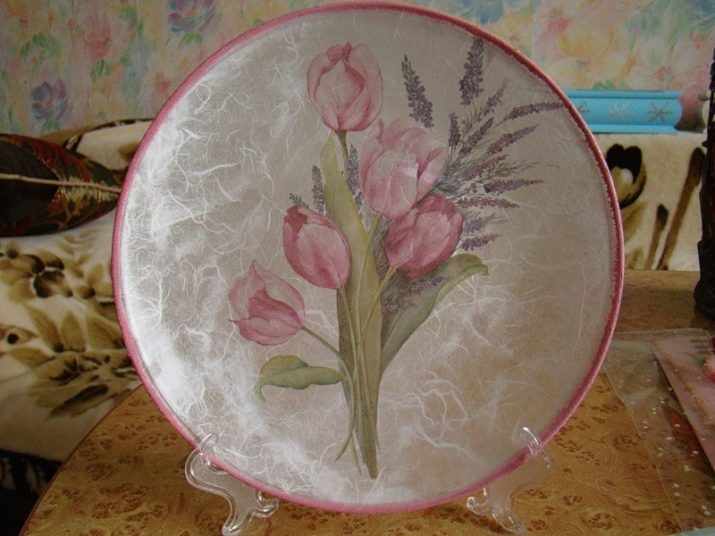
Volumetric decoupage
This technique allows you to create 3D compositions using plastic, eggshell. It is very important to prepare these materials by washing and drying them.
The action algorithm is as follows:
- the plate is washed and dried, degreased;
- glue is applied in a thin layer;
- the shell glues neatly, with the concave side up;
- again treated with PVA glue;
- then it is necessary to apply acrylic primer, and let it dry;
- glue and selected images are again applied to the resulting volume surface;
- the product is varnished;
- if necessary, decorative elements are used.
As an additional decor, shells, buttons, rhinestones, half beads, stones, ribbons, potal, newspaper tubes, marbling are used.

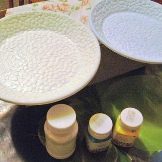
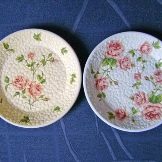
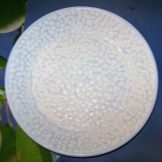
Interesting ideas
We offer you the latest and classic ideas for decorating plates using decoupage technique. Using the above algorithms of action and choosing the right materials, you can implement almost any of the presented compositions. To begin with, you can try to repeat the ensemble in order to develop a skill, and then make individual ideas and original solutions.
- Image in the center of the plate framed at the edges with intricate lace - A very effective way of decorating. The completeness of the composition gives bead decor to match the lace.

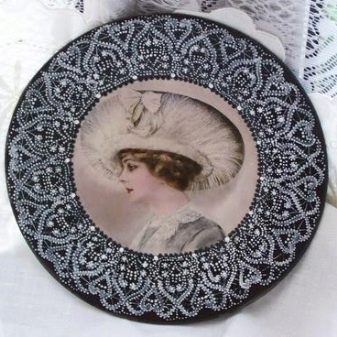
- New Year and Christmas motifs in decorating plates - one of the most popular destinations. Exquisite painting gives a special luxury to the composition.
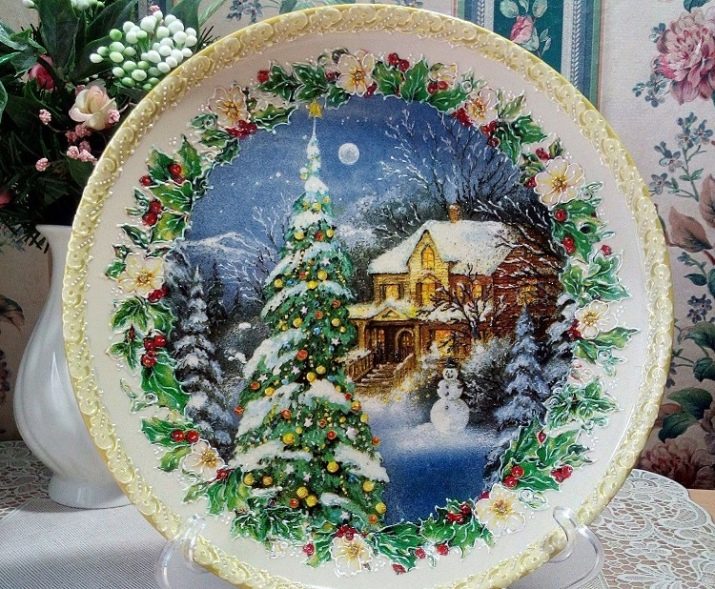
- Winter mood, thoughtful composition, correctly selected basic color scheme - this is the key to a stunningly beautiful result.
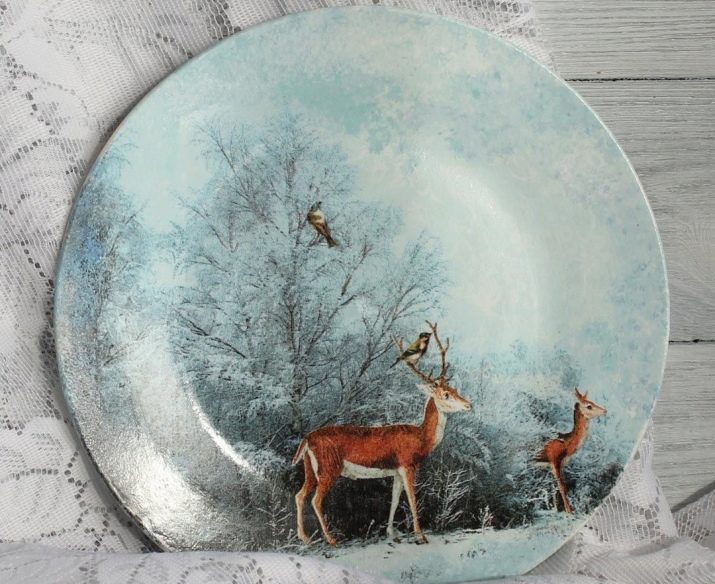
- Provence - a very common style in decoupage. Lavender motifs framed by the corresponding shade, exquisite patterns - all this makes up a very atmospheric ensemble.
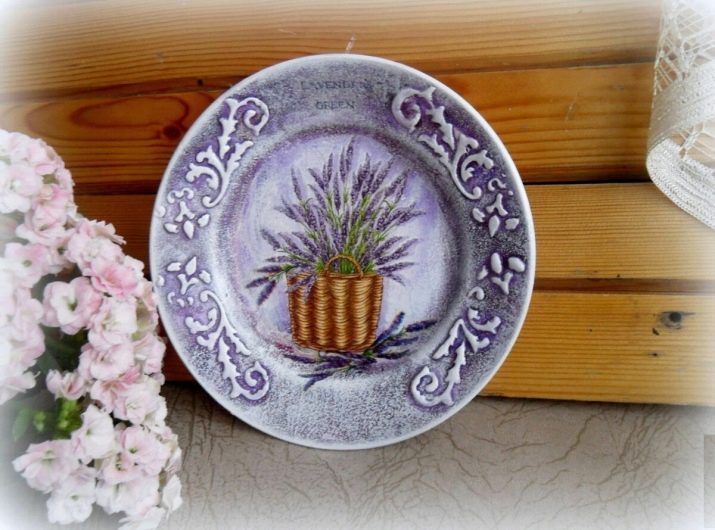
- Decoupage can be very concise and discreet, marble shades and artificial cracks give the product a very unusual look.
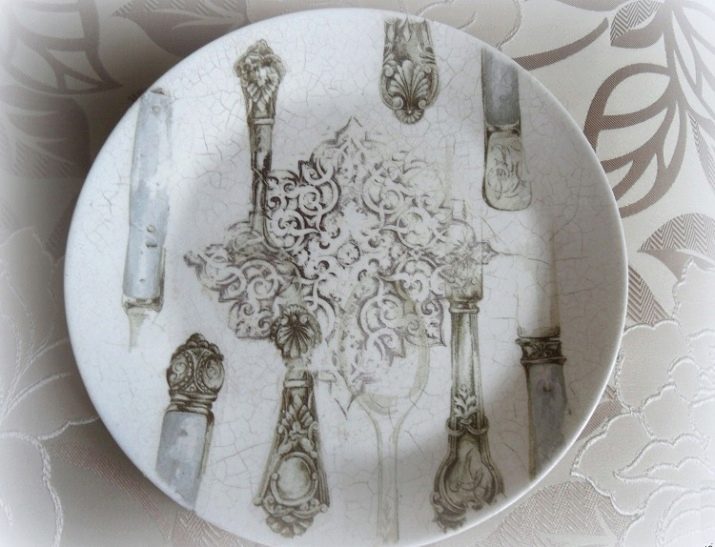
- Artificial Aging, gray-white background and luxurious floral motifs - a distinctive feature of shabby chic in a decoupage.
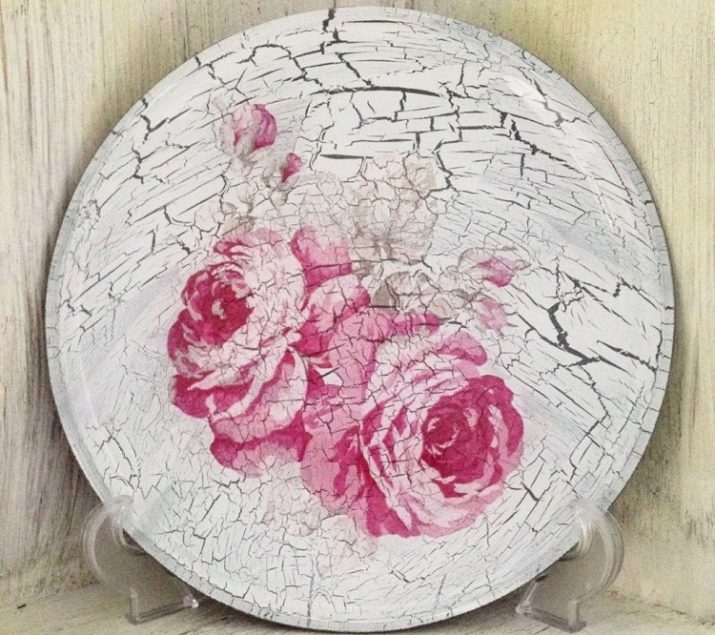
- Composition may consist of several small fragments, competently located on the surface.
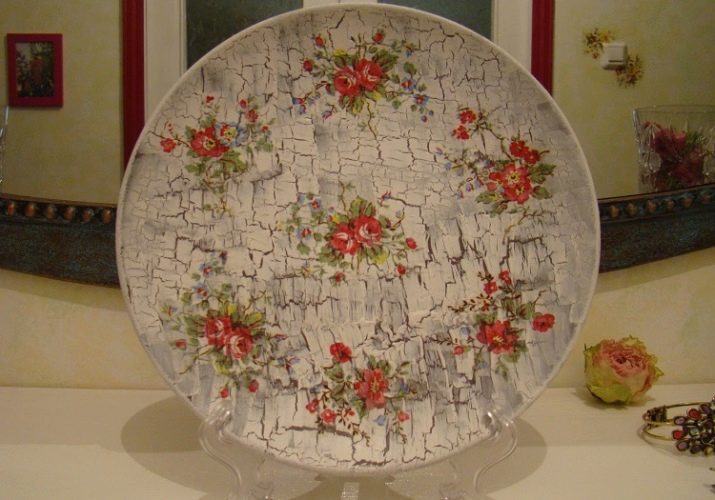
- Floral motifs - One of the most popular destinations in the decoupage of dishes. This composition is an example of an unusual combination of various decorative elements with classic decoupage.
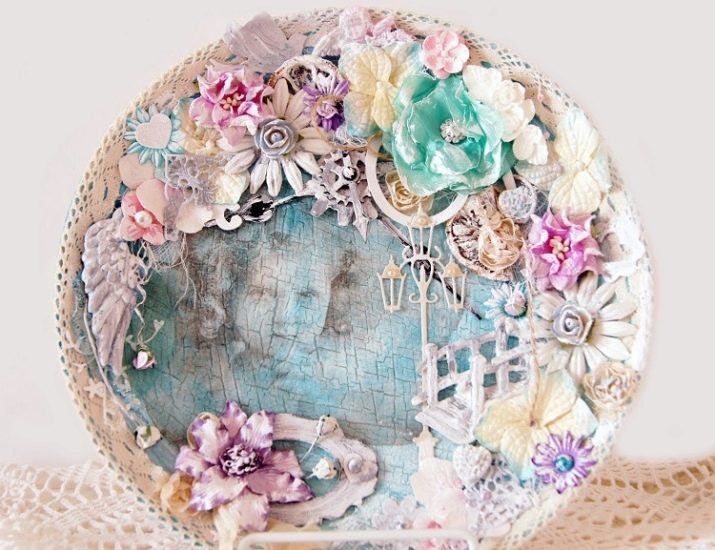
- Victorian-style decoupage distinguished by the presence of a golden decor and expressive plots, for example, with angels.

- Volumetric decoupage - A very effective way of decorating. You can select absolutely any part of the plot.

- Convex flower ensembles in decoupage look just incredibly attractive.
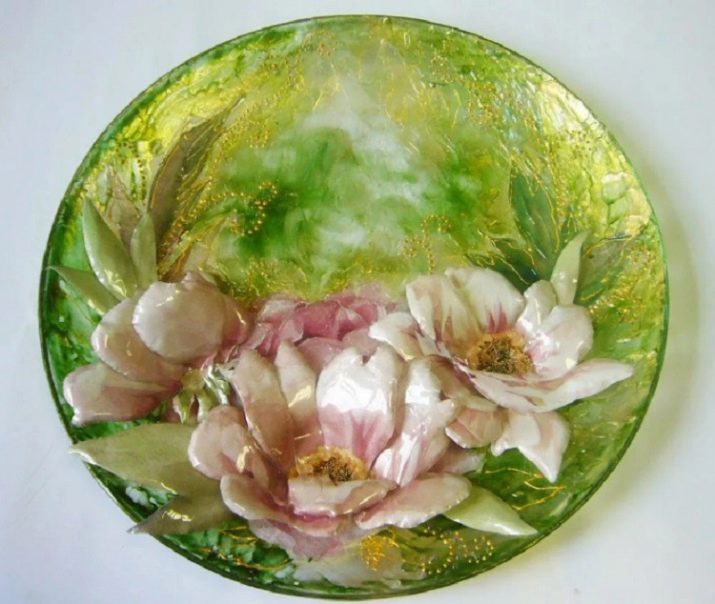
- A great way to add some decoupage decor from shells.
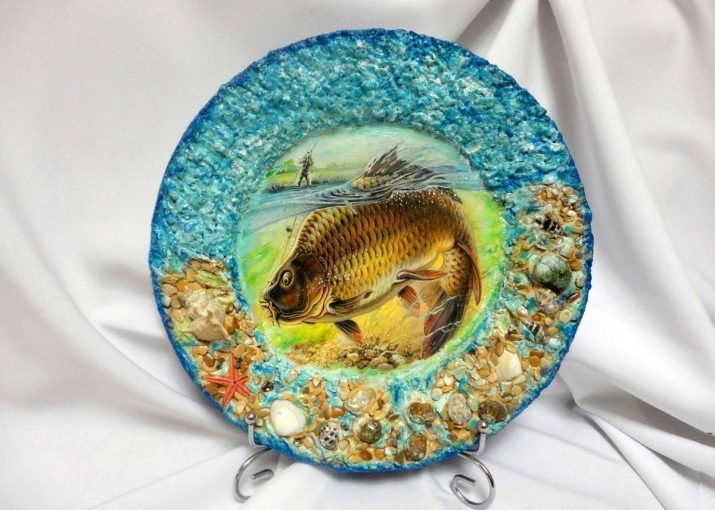
- Great example of a gift - plate with a photograph on a beautiful background.
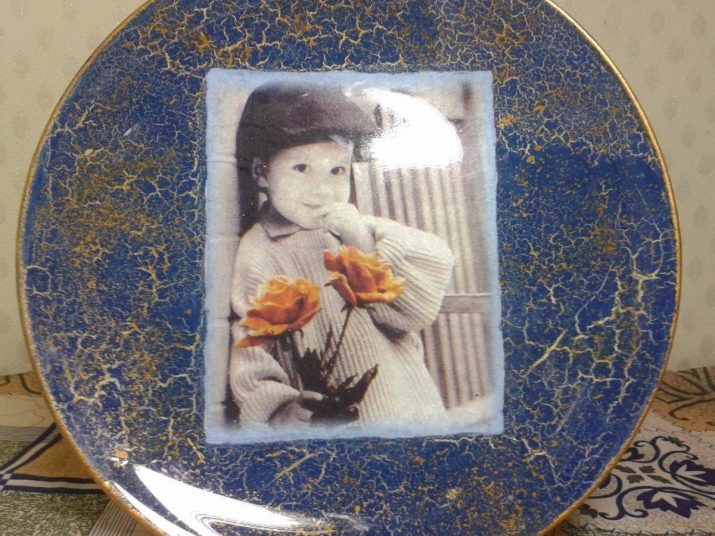
- Selecting decorative elements, build on the plot, temperature, mood of the main picture.
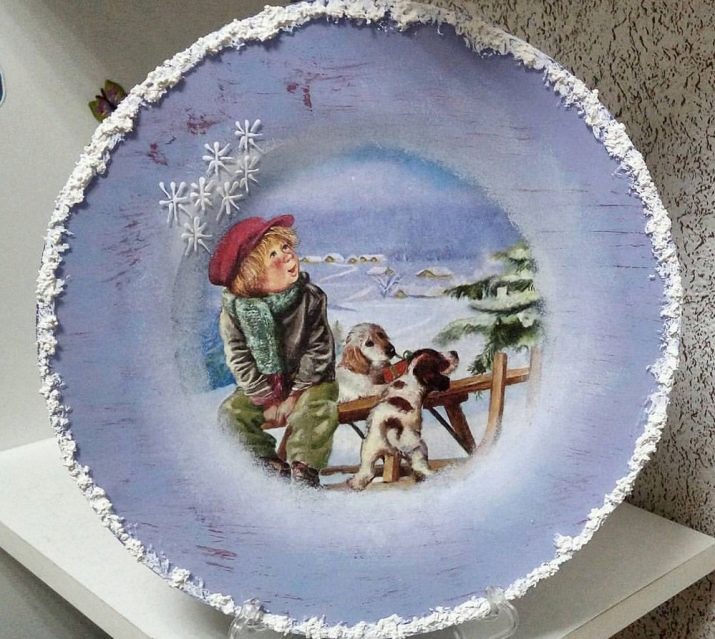
- Reverse decoupage can only be done on transparent dishes. In this case, the edges of the plate can be left without decoration.
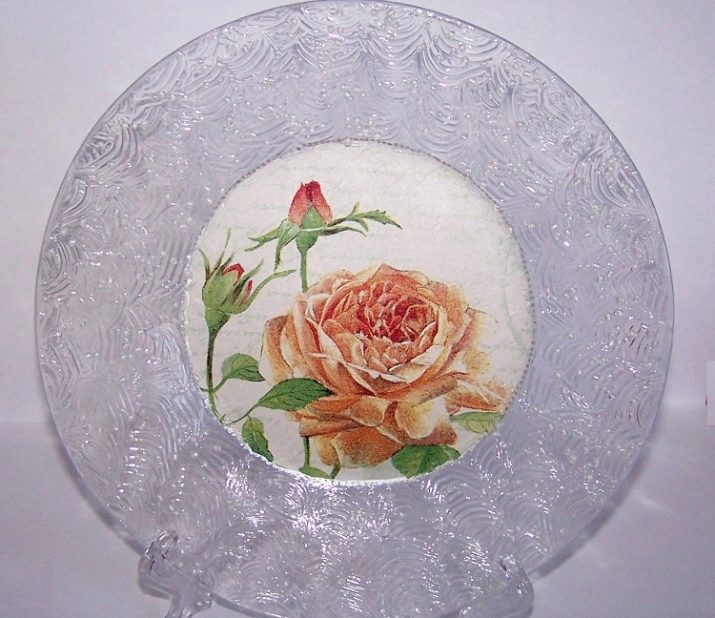
See the following video for a master class on cymbal decoupage.
